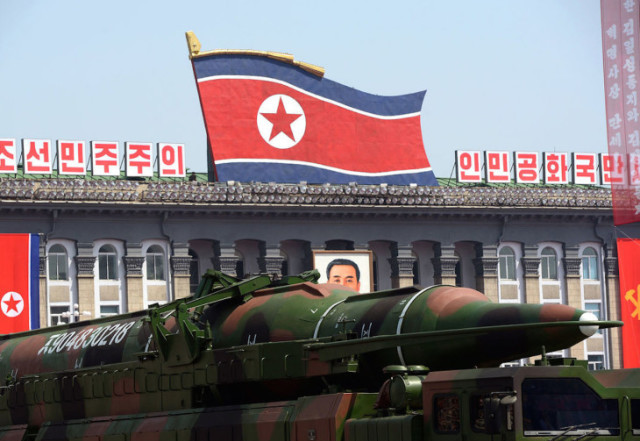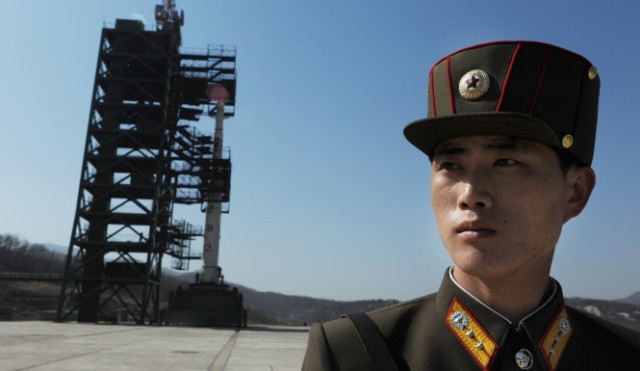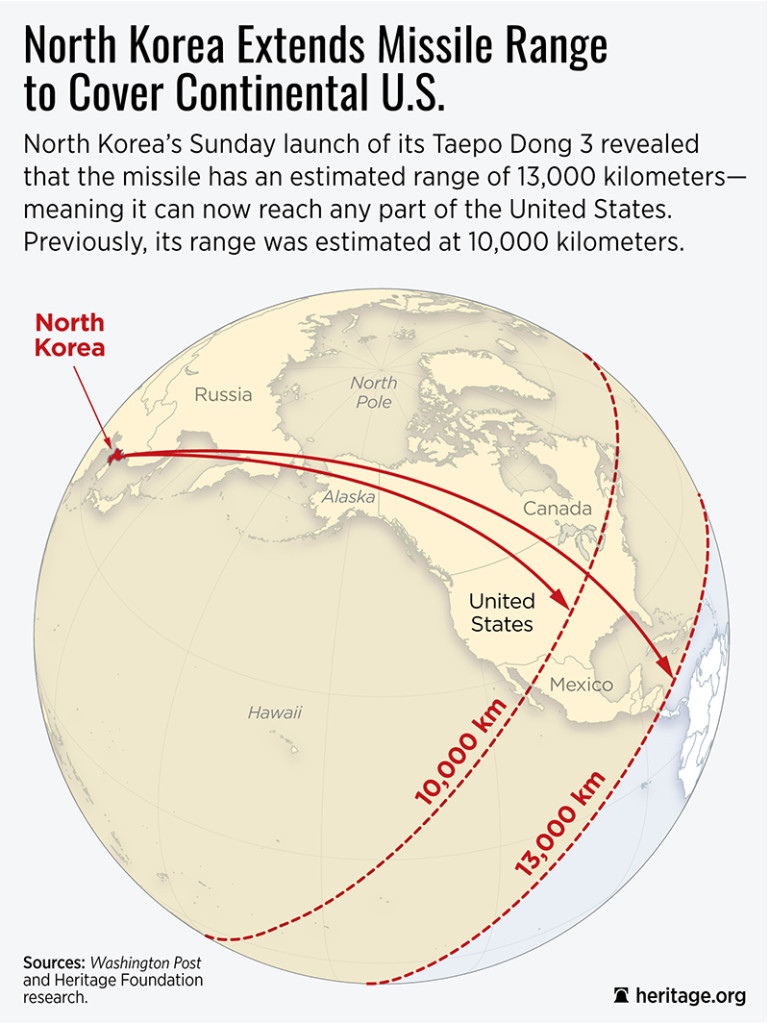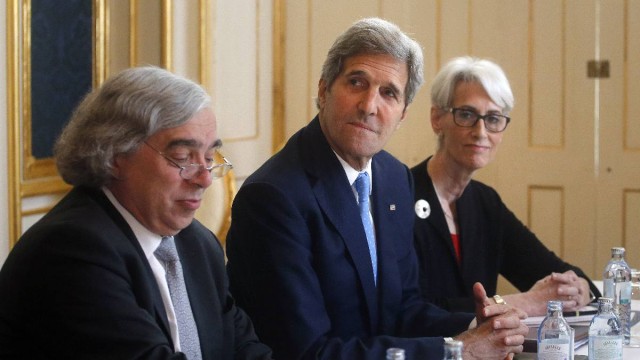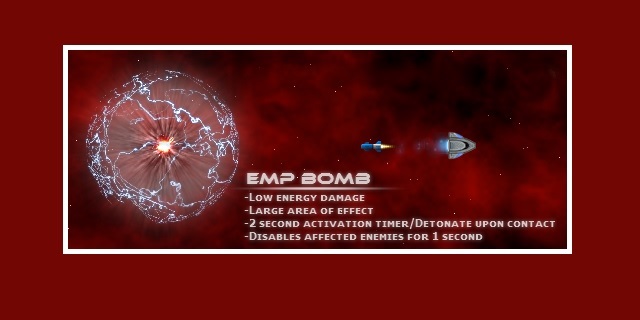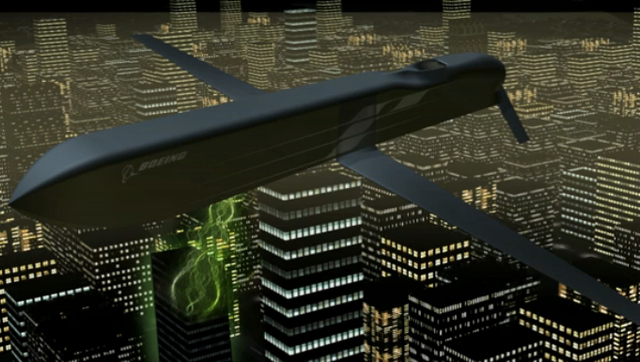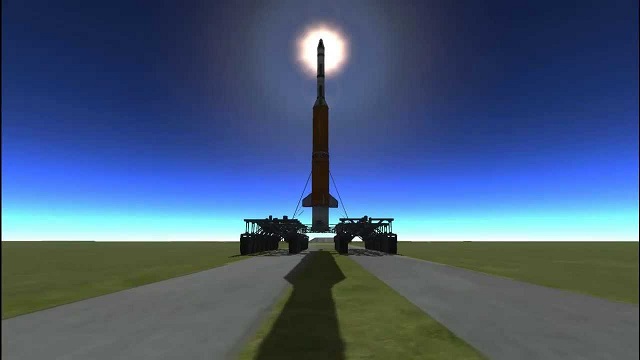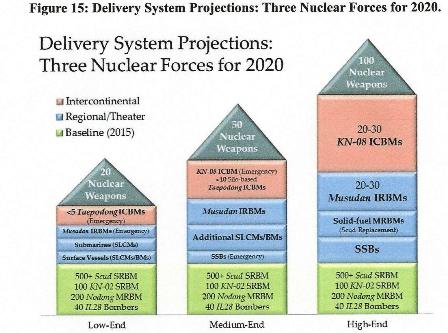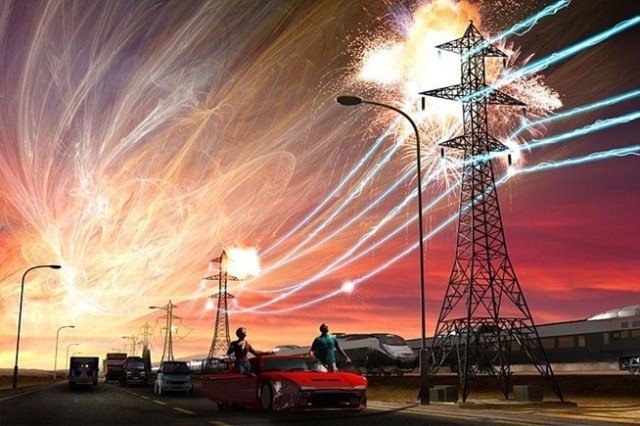U.S. Congress Unanimously passing Sanctions won’t stop North Korea from building Nuclear ICBMs
What a week it has been. No, we are not talking about the New Hampshire primary results or Saturday’s South Carolina debate, but rogue North Korea stealing the oxygen out of the international media’s lungs. It started with the second successful satellite launch since 2012 on Sunday, February 7, 2016 nearly over shadowing the Broncos victory in the 50th Super Bowl. As we wrote in an NER Iconoclast post on February 8, 2016, this game changer demonstrating the rogue regime’s ICBM technology and America’s inadequate ballistic missile defense, especially on our vulnerable heartland coast on the Gulf of Mexico:
Launched in a southerly direction, the 200 kg observational satellite is in polar orbit. That means it passes over the US every 95 minutes, perhaps providing imagery and GPS coordinates for possible later use. Yesterday, it missed the window of opportunity, by an hour, to pass over the stadium for 50th Super Bowl Championship game with tens of thousands of fans intent on watching the Denver Broncos beat the North Carolina Panthers for the title
“it’s great that the US has THAAD and ship borne X band radar floating in the Pacific and both ship and shore based Aegis installations in Eastern Europe (Romania) protecting us from missiles fired towards the East Coast. However, we have nothing in place to provide missile defense our vulnerable Gulf of Mexico coast.” Ambassador Hank Cooper, the Reagan era SDI chief, warned about the absence of Aegis missile defense installations on our Gulf coast in November 2015 and most recently in a Feb.2, 2016 High Frontier alert.
He argues that that our ballistic missile defense shield on the Gulf coast lacks the means to combat the threat of a possible North Korean bomb in a satellite (Fractal Orbital Bomb) or missiles launched from either ships in the Gulf or those silos that allegedly Iran has been building in the Paraguana Peninsula in Venezuela. Ex-CIA director R. James Woolsey and Dr. Peter Pry discussed in a July 2015 article the threat from FOBS that could trigger an Electronic Magnetic Pulse (EMP) effect over the US sending us back to the dark ages of the 19th Century before the advent of electricity.
 On Friday, February 12, 2015 CNN reported the rotund Kim Jong Un played another round of the Pyongyang version of the Games of Thrones with the dramatic execution of another high military officer, General Ri Yong-gil for, “factionalism, misuse of authority and corruption.” The young Kim family successor may yet set the record for summary execution of North Korean military officials surpassing that of his father and grandfather. The same day in Washington, the US Senate and House overwhelmingly passed a new round of North Korean sanctions. Reuters reported:
On Friday, February 12, 2015 CNN reported the rotund Kim Jong Un played another round of the Pyongyang version of the Games of Thrones with the dramatic execution of another high military officer, General Ri Yong-gil for, “factionalism, misuse of authority and corruption.” The young Kim family successor may yet set the record for summary execution of North Korean military officials surpassing that of his father and grandfather. The same day in Washington, the US Senate and House overwhelmingly passed a new round of North Korean sanctions. Reuters reported:
Lawmakers said they wanted to make Washington’s resolve clear to Pyongyang, but also to the United Nations and other governments, especially China, North Korea’s lone major ally and main business partner.
The package includes sanctions targeting North Korea and “secondary sanctions” against those who do business with it.
The vote was 408-2 in the House, following a 96-0 vote in the Senate on Wednesday.
Impatient with what they see as Obama’s failure to respond to North Korean provocations, many of his fellow Democrats as well as the Republicans who control Congress have been clamoring for a clampdown since Pyongyang tested a nuclear device in January.
Pressure for congressional action further intensified after last weekend’s satellite launch by North Korea.
Obama is not expected to veto the bill, given its huge support in Congress.
Earlier Fox News reported Gordon Chang expressing skepticism that more sanctions would not achieve the end of punishing North Korea for violating UN and US sanctions against missile development. We wrote:
Chang holds that sanctions don’t work with North Korea. Instead He suggested that we might control the aid to North Korea endeavoring to separate the people from the autocratic ruling Kim family. He also suggested that South Korea move 143 companies out of the Kaesong industrial shared with North Korea. He noted that after the January 6, 2016 nuclear test, no further sanctions were proposed at the UN because China would effectively block them. China he pointed out does a fair amount of banking with North Korea.
North Korea must have paid attention to Chang’s comments, as they seized jointly owned companies in the Kaesong industrial park. Deutsche Welle reported South Korea cutting off the power to the Kaesong complex on Friday, February 12, 2015. Effectively it was shutting the cross border industrial park down in retaliation for the North’s nuclear and missile tests in January and February 2016. South Korean News agency, Yonhap, reported on Sunday, February 14, 2014 the South Korean Unification Minister accusing the Hermit State of using funds to develop weapons systems:
In a television appearance, Unification Minister Hong Yong-pyo said “70 percent” of the money that flowed into the Kaesong Industrial Complex has been used by the ruling Workers’ Party to bankroll weapons development.
“Workers at Kaesong are paid in cash (U.S. dollars), but the money doesn’t go directly to these workers. It goes to the North Korean government instead,” Hong said.
“Any foreign currency earned in North Korea is transferred to the Workers’ Party, where the money is used to develop nuclear weapons or missiles, or to purchase luxury goods.”
Last week, South Korea shut down the industrial park in response to the North’s recent nuclear test and long-range rocket launch. Opened in 2004, the complex had long been a big cash cow for North Korea.
North Korea, in turn, expelled all South Korean nationals on Thursday from the complex and froze factory assets by South Korean firms, further driving the last remaining symbol of inter-Korean reconciliation to the brink.
For the last two weeks, the National Security Task Force of America (NSTFA) of the Lisa Benson Show has been running twitter rallies directed at the media and Republican Presidential hopefuls on one issue: our vulnerable Ballistic Missile Defense. The NSTFA sent out tweets and retweets at the rate of 400 to 600 an hour. The first NSTFA twitter rally, occurred before the New Hampshire primary debates, caught the attention of a South Carolina supporter of Texas Senator Ted Cruz who relayed the information to his campaign staff. Those NSTFA tweets focused on the most vulnerable area of the US exposed to a possible North Korean ICBM launch, the lack of any missile defense on our Gulf of Mexico. The result was that Cruz raised the issue during the debates. The second NSTFA twitter rally occurred Thursday, February 11th producing more than 6,000 twitter impressions. One of those Republican hopefuls targeted by the NSTFA twitter rally was Florida Republican Senator Rubio. Rubio’s platform statement on rebuilding and modernizing our military noted his missile defense proposals:
- Expand missile defense by speeding up deployment of interceptors in Europe, deploying a third site in the United States, and ensuring that advanced programs are adequately funded.
- Work interoperably with allies on missile defense – we should encourage the spread of missile defense technology as a solution to the spread of ballistic and cruise missiles.
- Increase the Missile Defense Agency’s Research & Development budget and create a rapid-fielding office to focus on fielding directed energy weapons, railguns, UAV-enabled defenses, and other means to defeat a threat missile across its entire flight trajectory.
The Wall Street Journal (WSJ) lead editorial in the Presidents Weekend edition on February 13-14, 2016, “The Rogue-State Nuclear Missile Threat,“ resonated some of the Rubio and others concerns about the US vulnerability to North Korean and possible Iranian missile strikes. The WSJ editorial noted, “North Korea can now threatens most of the continental US:”
Americans have been focused on New Hampshire, Iowa [and South Carolina}, but spare a thought for Los Angeles, Denver and Chicago. Those are among the cities within range of the intercontinental ballistic missile tested Sunday by North Korea. Toledo and Pittsburgh are still slightly out of range, but at least 120 million Americans with the wrong zip codes could soon be targets of Kim Jong Un.
The WSJ editorial went on to contrast the Bush versus the Obama Administration actions on missile defense:
You can thank the George W. Bush Administration for the defenses that exist, including long-range missile interceptors in Alaska and California, Aegis systems aboard U.S. Navy warships and a diverse network of radar and satellite sensors. The U.S. was due to place interceptors in Poland and X-Band radar in the Czech Republic, but in 2009 President Obama and Hillary Clinton scrapped those plans as a “reset” gift to Vladimir Putin.
Team Obama also cut 14 of the 44 interceptors planned for Alaska and Hawaii, ceased development of the Multiple Kill Vehicle (an interceptor with multiple warheads) and defunded the two systems focused on destroying missiles in their early “boost” phase, when they are slowest and easier to hit. By 2013 even Mr. Obama partially realized his error, so the Administration expanded radar and short-range interceptors in Asia and recommitted to the 14 interceptors for the U.S. West Coast. It now appears poised to install sophisticated THAAD antimissile batteries in South Korea.
Yet the Administration has failed to support a third East Coast site (to protect against Iranian and Russian threats) and provide adequate funding. Budgets are down about 25% from the Bush Administration’s roughly $10 billion a year. Mr. Obama’s final budget proposal released Tuesday would cut another $800 million from the Missile Defense Agency, nearly 10% from last year’s total.
The WSJ editorial concluded:
The overarching lesson of North Korea is the folly of arms control, starting with the 1994 Agreed Framework that first tried to buy off Pyongyang with energy and food aid. The U.S. would be safer today if it had moved to topple the Kim regime before it got the bomb. But having failed to act when the costs were lower, it is now necessary to buttress defenses in East Asia and the U.S. in what is fast becoming a new age of nuclear and missile proliferation.
From last Sunday’s Super Bowl game in Denver to Valentine’s Day, the evidence is piling up that Chang presciently opined; unanimous sanctions passed by Congress this past week will not deter North Korea from building nuclear ICBMs. Rather, it is the ironical proposal for a preemptive strike against North Korean missile launches by present Obama Pentagon chief Ashton Carter and former Clinton Era Secretary of Defense William Perry in a 2006 Time Magazine article.
The conclusion in our February 8, 2016 NER/Iconoclast post appears equally prescient:
The North Korean satellite launch coupled with the January 6, 2016 nuclear test exposes the vulnerability of the US to possible missile attack by rogue regimes like North Korea and ally Iran. The lack of a Ballistic Missile Defense demonstrated by this latest successful North Korean satellite launch now vaults the issue to the top of national security issues along with Islamic terrorism for serious discussion in the 2016 Presidential campaign.
RELATED ARTICLE: North Korea Set to Deploy KN08 Ballistic Missile
EDITORS NOTE: This column originally appeared in the New English Review.

